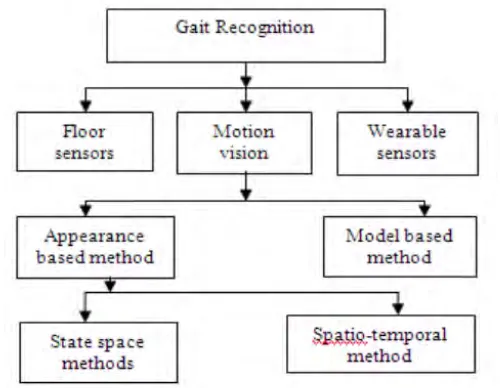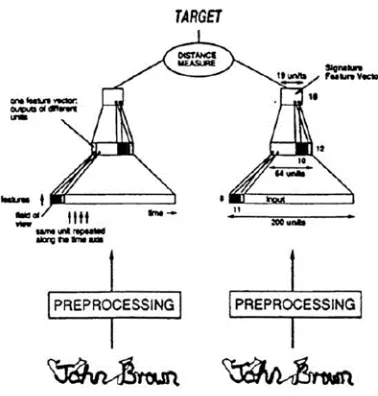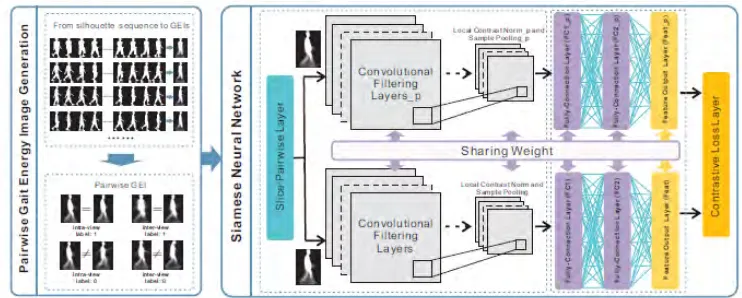DESIGN AND DEVELOPMENT OF CONVOLUTIONAL NEURAL NETWORK (CNN) ENABLED SMART CAMERA BASED USER
ENTRANCE INTENTION DETECTION SYSTEM
LAI YING CHAU
This Report Is Submitted In Partial Fulfilment Of Requirement For The Bachelor Degree of Electronic Engineering (Computer Engineering)
Fakulti Kejuruteraan Elektronik Dan Kejuruteraan Komputer Universiti Teknikal Malaysia Melaka
iii
“Saya akui laporan ini adalah hasil kerja saya sendiri kecuali ringkasan dan petikan yang tiap-tiap satunya telah saya jelaskan sumbernya.”
Tandatangan : ... Nama Penulis : LAI YING CHAU
iv
“Saya/kami akui bahawa saya telah membaca karya ini pada pandangan saya/kami karya ini adalah memadai dari skop dan kualiti untuk tujuan penganugerahan
Ijazah Sarjana Muda Kejuruteraan Elektronik (Komputer).”
v
To my parents, Lai Son Been and Tan Yoke Har, my supervisors Dr Lim Kim Chuan and Dr Soo Yew Guan.
vi
ACKNOWLEDGEMENT
Firstly, I would like to thank my family especially my father, Lai Son Been and my mother, Tan Yoke Har. Without their love and support over the years none of this would have been possible. They have always been there for me and I am thankful for everything they have helped me achieve.
Next, I would like to thank my supervisor Dr Lim Kim Chuan and Co-supervisor Dr Soo Yew Guan for your generous help and guidance over the years which is unmeasurable and without it I would not be where I am today. I thank you so much for the knowledge you have passed on and I will always be grateful for having the opportunity to be supervised and study under you.
I would also like to express my thanks to the deanery of Faculty of Electronic and Computer Engineering and head of Computer Engineering Department for their support ship to the student of higher education, the faculty is irreplaceable and their generosity to the student body is incomparable.
vii
ABSTRACT
viii
ABSTRAK
ix
TABLE OF CONTENT
CHAPTER TITLE PAGE
PROJECT TITLE I
DECLARATION III
APPROVAL IV
DEDICATION V
ACKNOWLEDGEMT VI
ABSTRACT VII
ABSTRAK VIII
TABLE OF CONTENT IX
LIST OF TABLES XII
LIST OF FIGURES XIII
LIST OF ABBREVIATIONS XVI
I INTRODUCTION 1
1.1 Introduction 1
1.2 Problem Statement 3
1.3 Objectives 3
1.4 Scope 3
1.5 Chapter Review 4
II LITERATURE REVIEW 5
2.1 Human Gait Recognition 5
x
2.1.2 Conventional CNN based Gait Recognition 7 2.1.3 Siamese Neural Network 8 2.1.4 3D Convolutional Neural Network 9 2.1.5 Long Short Term Memory(LSTM) 11 2.2 Graphics Processing Unit (GPU) 11
2.3 Summary 13
III METHODOLOGY 16
3.1 Inferencing the recorded user entering behavior video with the default C3D
16
3.1.1 CNN Architecture Selection 16 3.1.2 Data Collection for User Walking Behavior
Videos
17
3.2 Training C3D with User Entering and Pass by Behavior Videos
20
3.2.1 Modified Architecture of 3D-CNN and RNN Pipeline
20
3.2.2 System State Transition Diagram 21 3.3 Project Implementation Flowchart 21 3.3.1 Extract Features from C3D 23 3.3.2 Create Stateful Dataset 25
3.3.3 Train 26
3.3.4 Predict 28
3.3.5 Post Process 28 3.4 Running the Trained C3D on NVIDIA JETSON TX1
Embedded Board
28
xi
4.1 Inferencing the recorded user entering behavior video with the default C3D
31
4.2 Training C3D with User Entering and Pass by Behavior Videos
32
4.3 Running the Trained C3D on NVIDIA JETSON TX1 Embedded Board
37
V CONCLUSION AND RECOMMENDATION 39
5.1 Conclusion 39
5.2 Recommendation 40
xii
LIST OF TABLES
NO TITLE PAGE
2.1 Summary Table for Literature Review 13
3.1 C3D Architecture 24
xiii
LIST OF FIGURES
NO TITLE PAGE
2. 1 Classification of gait recognition system 5
2.2 Siamese Neural Network Model 8
2.3 The framework of Siamese neural network based gait recognition for human identification by Zhang
9
2.4 Extraction of multiple features from contiguous frames 11
2.5 GPU-accelerated computing 12
3.1 Architecture of 3D-CNN and RNN pipeline 17
3.2 Wireless IP Camera (P2P) 17
3.3 Collect dataset at entrance door with authentication access 18 3.4 Examples of videos recorded for dataset 19 3.5 Architecture of the proposed user entrance intention detection
pipeline to be running in the GPU accelerated CCTV embedded camera platform
20
3.6 System State Transition Diagram 21
3.7 Project Implementation Flowchart 22
3.8 Illustration of a Stateful Dataset 25
3.9 Consequence of a high learning rate which leads to failure of reaching minimum loss
27
3.10 NVIDIA JETSON TX1 with relay connected to GPIO module 29
3.11 GPIO module on NVIDIA JETSON TX1 29
3.12 Jetson TX1 J21 Header Pinout 29
4.1 Result of top 5 classification with default C3D and dataset. (a) lady is cleaning a sink
xiv
(b) Result of prediction
4.2 Results of inferencing a user entering behaviour video to C3D. (a) a man is walking pass by the door
(b) Wrong prediction of the video of a man passing by the door. (c) a lady is walking towards a door
(d) Wrong prediction of the lady walking towards a door.
32
4.3 Graph of C3D and RNN Training Accuracy 33
4.4 Graph of C3D and RNN Training Loss 33
4.5 Example of classification testing video.
(a) a video of a man walking toward a door with facing the door and raising his hand is tested by C3D.
(b) Entering activity is predicted with the score of 94.13%.
35
4.6 Example of classification testing video
(a) a video of a lady walking toward a door with facing the door and raising her hand is tested by C3D.
(b) Entering with access activity is predicted with the score of 99.77%.
36
4.7 Example of classification testing video
(a) a video of a man walking directly straight without go near to the door is tested by C3D.
(b) Pass by activity is predicted with the score of 99.46%.
36
4.8 Example of classification testing video
(a) a video of a group of ladies are walking directly straight without go near to the door is tested by C3D.
(b) Pass by activity is predicted with the score of 67.09%.
37
4.9 Example of classification testing video
(a) a video of a lady with carrying a baby and a child who wants to enter an access door is tested by C3D.
(b) Entering with access activity is predicted with the score of 43.48%.
37
xv
LIST OF ABBREVIATIONS
C3D - 3D Convolutional Neural Network CCTV - Closed-circuit Television
CNN - Convolutional Neural Network CPU - Central Processing Unit
GEI - Gait Energy Image
GPIO - General Purpose Input Output GPU - Graphics Processing Unit
HOG - Histogram of Oriented Gradient IPSA - Intelligent Personal Security Assistant LSTM - Long Short Term Memory
MSE - Mean squared error P2P - Wireless IP Camera RNN - Recurrent Neural Network
1
CHAPTER I
INTRODUCTION
1.1 Introduction
2
These techniques are all successful in controlling automatic entrance door by detecting object approaching near to the door, however they are not capable to understand the type and the intention of the approaching objects. For instance, a puppy or a passing pedestrian may accidentally trigger the door and cause a false opening action. Frequent false opening action of automatic entrance door would impact is air conditioning energy waste and reduces equipment lifetime.
This calls for the need of a user entrance intention detection system based smart camera integrating with automatic door control system since access doors are commonly equipped with CCTV to record the access to the guarded facilities. With the advancement of computer vision for self-driving car technology and accelerated embedded computing platform, the feasibility of using these matured technologies in creating Intelligent Personal Security Assistance (IPSA), running right inside the CCTV camera to determine user entrance intention is being explored in this project.
Human action recognition in videos attracts increasing research interests in computer vision community due to its potential applications in video surveillance, human computer interaction, and video content analysis. It is the main techniques in order to run an Intelligent Personal Security Assistance inside a CCTV camera to detect user entrance intention. Intelligent Personal Assistants, also known as virtual human assistants are devices or software applications that can assist the user with in daily activities, navigation, information retrieval, and organisation.
3
1.2 Problem Statement
Current sensor-based automatic entrance door access could lead to false opening action as it is not capable to understand the type of objects and the intention for accessing the entrance. This false opening action could waste air conditioning energy and reduce equipment lifetime. While conventional automatic door with authentication access cause inconvenience to the user when the user is entering while carrying a handful of things and it is also inefficiency in flashing access card frequently.
1.3 Objectives
The aim of this study is to design and development of Convolutional Neural Network enabled smart camera based user intention detection system for the purpose of creating Intelligent Personal Security Assistance (IPSA). Some objectives are needed to be accomplished in order to achieve the aim of this study.
a) To identify suitable CNN based technique for classifying user intention (body language) of approaching and accessing the access door.
b) To train the identified CNN (with transfer learning) to automatically learn body language (gait and trajectory) from video sequences to classify the intention of user.
1.4 Scope of work
4
human entering or passing by an entrance content videos dataset is recorded in order to achieve high accuracy and good performance in human gait recognition in videos.
1.5 Chapter Review
Chapter 1 describes the general overview of this project. This chapter presents the introduction, problem statement, objectives, scope of work and review of all chapters included in this thesis.
Chapter 2 discusses the terminology of deep learning techniques being used in this project. The techniques to be discussed includes the 3D-CNN that exploits spatial and short temporal correlations and Recurrent Neural Network (RNN) which exploits long temporal correlations. This chapter also presents the previous and related work to this project.
5
CHAPTER II
LITERATURE REVIEW
2.1 Human Gait Recognition
[image:19.595.211.461.528.722.2]Human gait recognition can be classified into three groups namely, motion vision based, wearable sensor based and floor sensor based. The motion vision can be divided into two groups namely; appearance based methods and model based methods. The appearance based method can be also subdivided in two types; state space methods and spatio-temporal methods [2, 3, 4, 5]. Figure 2.1 shows motion vision based system flow chart.
6
Data representation plays the main role in affecting the performance of learning algorithm. Thus, average silhouette approaches for a sequence was introduced by Liu and Sarkar [6]
2.1.1 Gait Energy Image (GEI)
The Gait Energy Image (GEI) representation was proposed by Han and Bhanu [7]. Gait Energy Image (GEI) is the sum of images of the walking silhouette divided by the number of images. GEI is a useful representation with superior selective power and strength against segmental errors [8]. It has been widely used due to its simplicity and effectiveness. According to a recent study by Iwama, et al, which evaluated the performance of different gait representation templates using a large gait dataset (containing no covariates) showed that it outstands from other gait representation templates as it saves storage space and computation time for recognition.
Gait Energy Image (GEI) method to apply recursive principle component analysis technique achieved better recognition rate [9, 10, 11, 12]. Gait Energy Image (GEI) representation were used for different application purposes such as removing subject backpack without losing subject original shape and information [9], human identification [10], person recognition [11] and recognition on gender or age groups [13]. Lee et al. applied to their method to normal walk, slow walk, and fast walk for experiment. They have used CASIA C dataset for conducting the test.
Shingh and Biswas approached gait energy image (GEI) method for human identification. They selected normal walk, wearing a coat or jacket or carrying a bag for recognition purposes. They informed that normal walk sequence is obtaining better recognition rate compared to carrying a bag or wearing a jacket or coat. They focused on subject body alignment with bottom and upper part of the body as feature. They also reported that gait recognition rate can be improved by applying GEI method. They selected large CASIA gait database for the experiment [10, 14].
7
templates for the experiment. They selected USF HumanID gait database for gait recognition purposes. They also used others gait database to compare recognition rate with current method with selected gait database. The GEI method is obtained better recognition rate after comparing published gait result [11].
Okumura et al., (2010) described a large-scale gait database that can use widely for vision based gait recognition. They focused on gait energy image method for recognition on gender or age groups. From the experiment, female subjects are achieving better recognition rate compared to male [15] . For the age grouping, it’s evaluated according to maturity of walking ability and also physical strength. They have got different fluctuation from different age groups. They also compared with several gait databases to evaluate their method performance [13].
2.1.2 Conventional CNN based Gait Recognition
The hand-crafted Conventional CNN used the traditional image processing method for example: Histogram of Oriented Gradient (HOG) and Scale Invariant Feature Transform (SIFT). Conventional CNN based gait recognition is an attempt to fine-tune the conventional CNN on the gait dataset for gait recognition by achieving below tasks:
a) CNN is capable to learn discriminative features automatically by exploring deep architecture at multiple level of abstracts from raw data, without any domain knowledge.
b) Fine-tuning from a pre-trained model is a good solution to solve the data limitation problem and speed up the convergence of new model.
8
These hand-crafted systems dominate the object recognition field and are very useful for the object recognition on small scale datasets. However, the drawbacks of hand-crafted system are obvious when it is employed with large scale datasets as it requires millions of templates for template matching. Different from hand-crafted systems, deeply-learned systems learnt the image features from the images automatically. While the Convolution Neural Network (CNN) shows its great performance for ImageNet image classification.
2.1.3 Siamese Neural Network
The Siamese Network was first introduced by Yann LeCun et al. in year 1993 to be applied to face and signature verification task [17]. Siamese network is used to learn a function that maps input patterns into latent space where similarity metric to be small for pairs of the same objects and large for pairs from different objects. This is implemented by feeding the output of two sub identical network that share the same weights and parameters to a cost function that compute the distance measure by using Cosine Similarity function.
[image:22.595.230.419.549.747.2]Figure 2.2 shows the Siamese neural network model. Thus, Siamese network is the best suited for verification scenarios such as gait recognition where the number of classes is very large and examples of all the classes are not available at the time of training.
9
[image:23.595.143.514.360.509.2]Siamese Neural Network designed by Zhang contains two parallel CNN architectures, which consist of two parts, the two convolutional layers and max-pooling layers and three fully connection layers as shown in Figure 2.3 [16]. In the training stage, the two branches of the network will be optimized simultaneously with the weight sharing mechanism. Pairwise images with similar or dissimilar labels separately entrance the two CNNs. Then the output of the CNNs are combined by the contrastive layers to compute the contrastive loss. After that, the back-propagating with contrastive loss is used to fine-tune the model. They use OULP-C1V1-A-Gallery dataset, with 20,000 similar GEI pairs and randomly selected 20,000 dissimilar pairs for training sets while send the query GEI into one of the CNNs during testing stage to compute feedforward network based on the matrix multiplication for one time to extract features.
Figure 2.3: The framework of Siamese neural network based gait recognition for human identification by Zhang. [16]
2.1.4 3D Convolutional Neural Network
10
𝑣𝑖𝑥𝑗𝑦 = tanh(𝑏𝑖𝑗+ ∑ ∑ ∑ 𝑤𝑖𝑗𝑚
𝑝𝑞
𝑣(𝑖−1)𝑚(𝑥+𝑝)(𝑦+𝑞) 𝑄𝑖−1
𝑞=0 𝑃𝑖−1 𝑝=0
𝑚 ) (2.1)
Where tanh(.) is the hyperbolic tangent function, 𝑏𝑖𝑗 is the bias for this feature map, m indexes over the set of feature maps in the (i-1)th layer connected to the current feature map, 𝑤𝑖𝑗𝑘𝑝𝑞 is the value at the position (p,q) of the kernel connected to the kth feature map, and Pi and Qi are the height and width of the kernel, respectively. In the subsampling layers, the resolution of the feature maps is reduced by pooling over local neighborhood on the feature maps in the previous layer, thereby increasing invariance to distortions on the inputs. A CNN architecture can be constructed by stacking multiple layers of convolution and subsampling in an alternating fashion. The parameters of CNN, such as the bias𝑏𝑖𝑗and the kernel weight 𝑤𝑖𝑗𝑘𝑝𝑞, are usually trained using either supervised or unsupervised approaches [18, 19]. While 3D CNN extracts feature from both spatial and temporal dimensions [20] by performing 3D convolutions, thereby capturing the motion information encoded in multiple adjacent frames [21]. This is necessary to capture the motion information encoded in multiple contiguous frames when applied to video analysis problems. The 3D convolution is achieved by convolving a 3D kernel to the cube formed by stacking multiple contiguous frames together. By this construction, the feature maps in the convolution layer is connected to multiple contiguous frames in the previous layer, thereby capturing motion information.
𝑣𝑖𝑥𝑗𝑦𝑧 = tanh(𝑏𝑖𝑗 + ∑ ∑ ∑ ∑ 𝑤𝑖𝑗𝑚
𝑝𝑞𝑟
𝑣(𝑖−1)𝑚(𝑥+𝑝)(𝑦+𝑞)(𝑧+𝑟) 𝑅𝑖−1
𝑟=0 𝑄𝑖−1 𝑞=0 𝑃𝑖−1 𝑝=0
𝑚 ) (2.2)
where Ri is the size of the 3D kernel along the temporal dimension, 𝑤𝑖𝑗𝑚𝑝𝑞𝑟 is the (p, q, r)th value of the kernel connected to the mth feature map in the previous layer.


